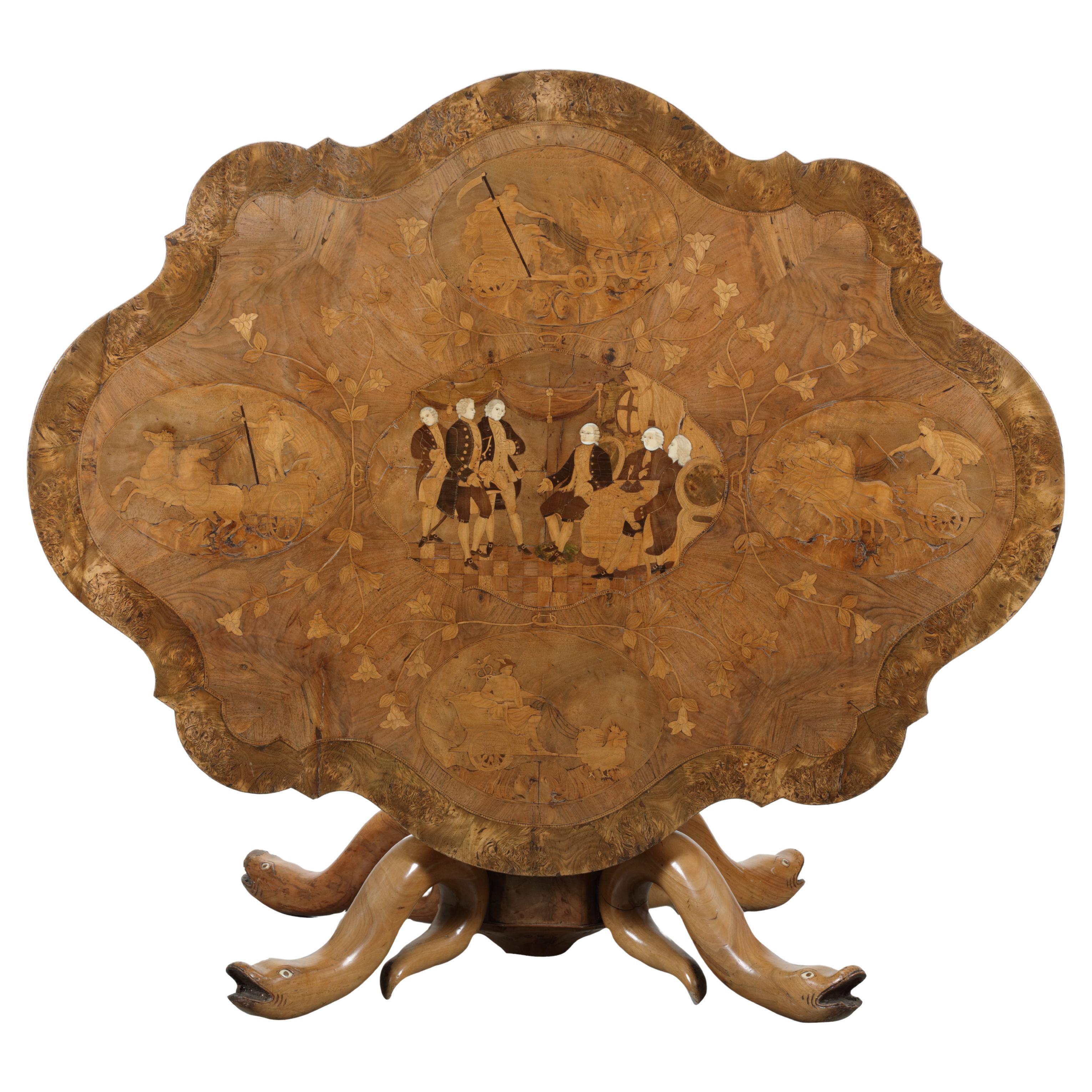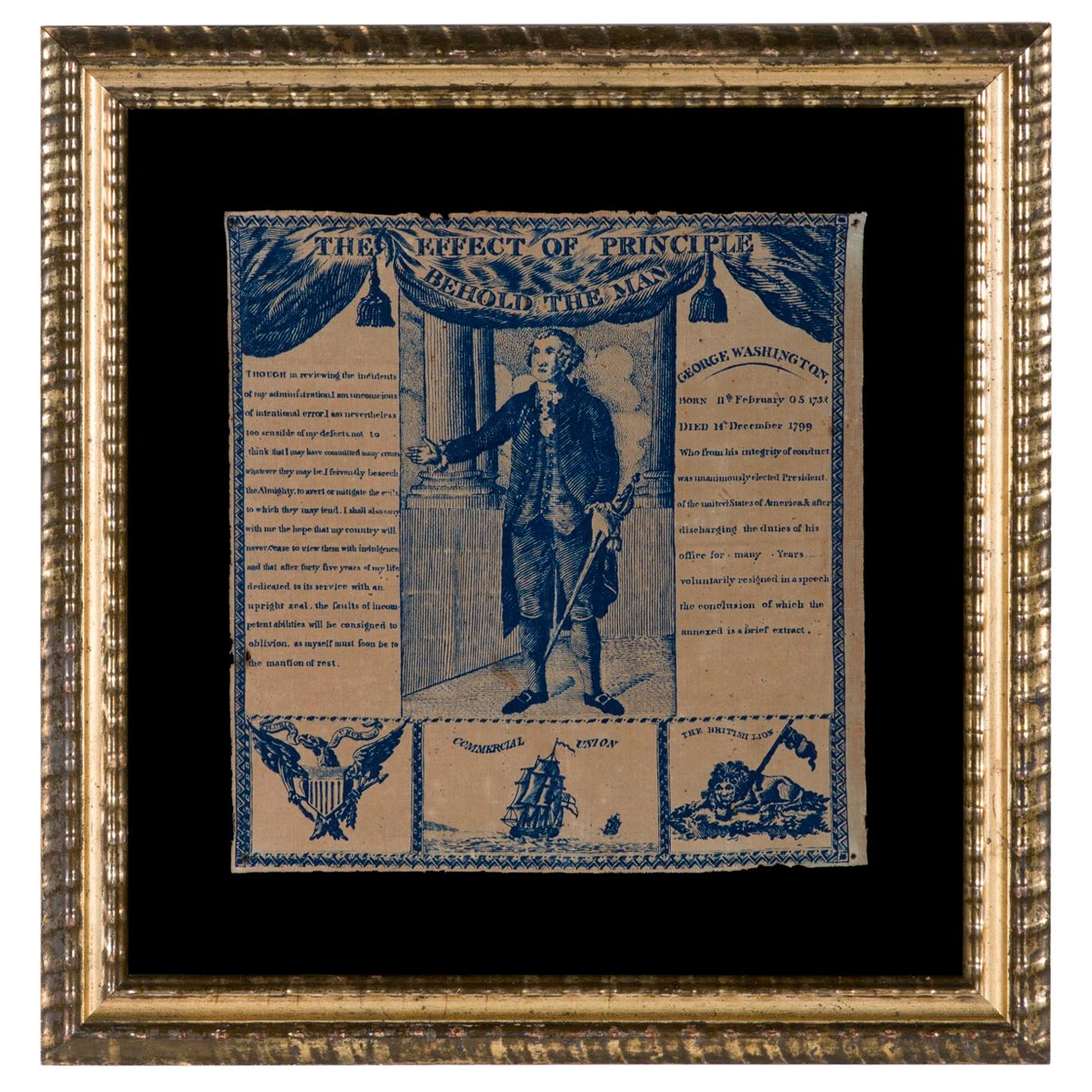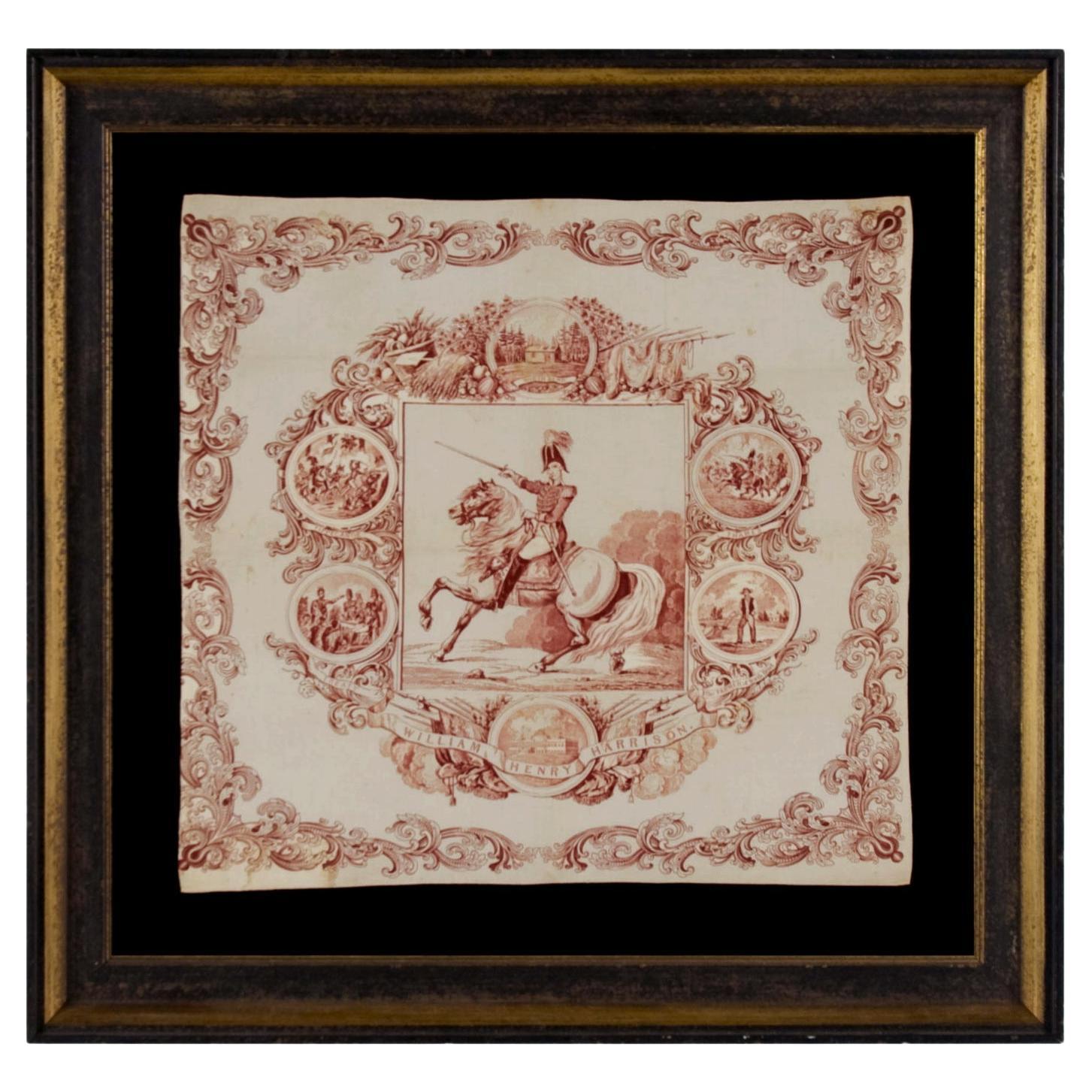Items Similar to William Penn's Treaty, Pennsylvania, Engraving, London, 1775
Want more images or videos?
Request additional images or videos from the seller
1 of 11
William Penn's Treaty, Pennsylvania, Engraving, London, 1775
About the Item
John Hall (1739-1797) William Penn's Treaty With The Indians After Benjamin West, Published by John Boydell, 1775 London, Engraving 17"-inches x 22 1/2"-inches. William Penn's Treaty with the Indians, when he founded the province of Pennsylvania in North America, 1681.
The engraving is trimmed to the platemark, fine early impression, circa 1775, Handsomely framed and glazed, Titled in gold on the mount.
- Creator:John Boydell (Maker)
- Dimensions:Height: 17 in (43.18 cm)Width: 22.5 in (57.15 cm)Depth: 1 in (2.54 cm)
- Style:American Empire (Of the Period)
- Materials and Techniques:Paper,Engraved
- Place of Origin:
- Period:
- Date of Manufacture:1775
- Condition:Wear consistent with age and use.
- Seller Location:Ottawa, CA
- Reference Number:1stDibs: LU141729557113
About the Seller
5.0
Platinum Seller
These expertly vetted sellers are 1stDibs' most experienced sellers and are rated highest by our customers.
Established in 1989
1stDibs seller since 2015
413 sales on 1stDibs
Typical response time: 2 hours
- ShippingRetrieving quote...Ships From: Ottawa, Canada
- Return PolicyA return for this item may be initiated within 7 days of delivery.
More From This SellerView All
- Two Putti's in Flight Attributed to Francois BoucherBy François BoucherLocated in Ottawa, OntarioTwo Putti's in Flight Attributed to Francois Boucher (Paris 1703-1770), Black chalk and stamping, with red and white chalk on buff paper. Bears signature in pen and brown ink: F.Bouc...Category
Antique Mid-18th Century German Neoclassical Drawings
MaterialsPaper
- Market Scene in Paris by Egron Sillif LundgrenBy Egron Sillif LundgrenLocated in Ottawa, OntarioA market scene in Paris by Egron Sillif Lundgren, (Swedish, 1815-1875), Pencil, touches of red and heightened with white on buff paper. Size: 7" inches high x 10" inches. Framed: 1...Category
Antique Late 19th Century Swedish Directoire Drawings
MaterialsPaper
- Study of a Human Skull Drawing Dated 1918Located in Ottawa, OntarioA study of a human skull Dated 1918. Measures: Drawing 8 x 6 5/16 in, (20.3 x 16 cm.) Frame (not glazed), 15 1/2 x 13 1/4 in. (39.4 x 33.6 cm.) Black chalk heightened with white ...Category
Early 20th Century German Expressionist Drawings
MaterialsPaper
- Drawing of Architectural Element, Mid-20th CenturyLocated in Ottawa, OntarioA drawing of Architectural element, mid-20th century, upper part of a Roman column with a Composite Capital. Black chalk heightened with white on brown paper, framed and matted, hand...Category
Vintage 1950s Unknown Classical Roman Drawings
MaterialsPaper
- Head of a Tiger Attributed to William Huggins '1820-1875'By William John HugginsLocated in Ottawa, OntarioAttributed to William Huggins (1820-1884) Head of a Tiger. Bears signature 'W. Huggins' and dated 1875, on the (lower right). Watercolour on paper laid down on board irregula...Category
Antique Mid-19th Century English Georgian Paintings
MaterialsPaper
- William Henry Chandler Pastel, Cottage in an Autumn LandscapeBy William Henry ChandlerLocated in Ottawa, OntarioWilliam Henry Chandler (1854-1928) Pastel, a cottage in an autumn landscape, signed "Chandler" on lower right. Pastel on paper in period mahogan...Category
Antique Late 19th Century American American Classical Decorative Art
MaterialsPaper
You May Also Like
- Centre Table Commemorating the Paris Treaty and the USA Independence, Dated 1886Located in Amsterdam, NLA very interesting centre table commemorating the Paris Treaty between the original thirteen states of the United States of America and Great Britain ending the American Revolution o...Category
Antique Late 19th Century American Directoire Center Tables
MaterialsBone, Wood
- 1806 Printed Linen Kerchief Glorifying George Washington, Germantown, PennLocated in York County, PAEXTRAORDINARILY EARLY (1806) PRINTED LINEN KERCHIEF GLORIFYING GEORGE WASHINGTON, PRINT WORKS, GERMANTOWN, PENNSYLVANIA Printed in blue ink on coarse, white linen, this patriotic kerchief shows a standing portrait of George Washington, above which is a swag valance and the words “The Effect of Principle, Behold the Man”. The portrait is based on a mezzotint after Gilbert Stuart’s very famous painting of Washington in his later years, most often referred to as the Landsdowne portrait. Stuart painted three versions of it in oil on canvas, one of which was completed in 1796 for a wealthy merchant by the name of William Constable, who commissioned the work for Alexander Hamilton. The kerchief is interesting because it is both American-made and documented. This is exceptionally unusual for any printed textile of the 19th century or prior and the earlier the time period the more unlikely an object is to be identified. This kerchief and a companion piece entitled “The Love of Truth Mark the Boy” (also glorifying Washington, through the fabled story of the cherry tree), were made circa 1806 by Germantown Print Works in Germantown, Pennsylvania. To the left of Washington's image is a portion of his infamous farewell address to his troops at the end of the Revolutionary War. To the right is a short excerpt from his eulogy. Below these are three images. In the center is a square-rigged tall ship with “Commercial Union” above it, flanked by the American eagle on the left and the British lion on the right. It is reasonable to assume that the textile may have been produced in demonstration of the maker's desire, and/or that of others, to advance trade with England. Commercial printers were very influential in early America, as they possessed the means by which to disseminate information. This kerchief and its companion piece are documented in Threads of History, Americana Recorded on Cloth, 1775 - the Present, by Herbert Ridgeway Collins (1979, Smithsonian Press), p. 63, items 38 & 39.* The two pieces pictured are in the collection of Cornell University, but the Collins text also cites an uncut pair to be present in the collection of the Western Reserve Historical Society, Cleveland, OH. The name "Germantown Print Works" is printed on the Western Reserve examples. Another example of the textile in question is documented in "Running for President, The Candidates and Their Images, 1789-1896" by Schlesinger, Israel, and Frendt, (1994, Simon & Schuster), p. 15. I have seen three different color variations of this textile, including sepia, mulberry red, and blue. This particular example has a hand-sewn binding along the top, lower, and left edges. Mounting: The textile was mounted and framed within our own conservation department, which is led by expert staff. We take great care in the mounting and preservation of flags and have framed thousands of examples. The gilded molding has a rippled profile and dates to the period between 1825 and 1850.The background is 100% cotton twill, black in color. The glazing is U.V. protective plexiglass. Feel free to contact us for more details. Condition: There is an all-over golden oxidation of the white fabric and there is very minor staining. There are tiny tack holes in each corner and there are minor nicks around the perimeter. * Collins relates that Germantown Printworks was operated by the Hewsons. In doing so he cites one of Worthington Chauncey Ford's books on George Washington, but it isn't clear which one (there are many) and no page numbers are given. John Hewson was an Englishman who came to America and opened his printing business on the advice of Benjamin Franklin. He was one of the first “calico printers” and is the earliest documented to have advertised printed kerchiefs. His ads for bandanas appear as early as June 20th, 1774. He is suspected of having produced the very first American kerchief that pictured an American president, which is documented in Collins as item 1 on page 48. Linda Eaton, curator at Winterthur, in 2012, is currently doing in depth research on the three printers of fabrics that were operating in Germantown in early America. She discovered that the owner and/or operator of Germantown Print Works, while not currently known, was not John Hewson. This information is not yet published. She also noted that Winterthur possessed examples of the two George Washington textiles...Category
Antique Early 1800s American Political and Patriotic Memorabilia
MaterialsCotton
- William IV Police TruncheonLocated in Chillerton, Isle of WightA William IV policeman’s truncheon. A great piece of social history, the baton has a slightly shaped grip handle, the lower part is painted in Red and the upper part has a blue ba...Category
Antique Early 19th Century Regency Political and Patriotic Memorabilia
MaterialsPaint
- 1840 Campaign Kerchief of William Henry Harrison on HorsebackLocated in York County, PA1840 campaign kerchief featuring an image of William Henry Harrison on horseback in military garb, one of the first known campaign textiles in e...Category
Antique Mid-19th Century American Political and Patriotic Memorabilia
MaterialsCotton
- William & Mary Rare Pewter Trefid Spoon with Portraits, Circa 1690Located in Bishop's Stortford, HertfordshireVery rare William and Mary pewter trefid spoon the handle molded in relief with portraits and dating from around 1690. The spoon has an elongated rounded ...Category
Antique 17th Century English William and Mary Political and Patriotic Me...
MaterialsPewter
- Pair of 17th Century Engravings of Swedish Kings Karl X & Karl XILocated in Miami, FLA pair of fine engravings of two Swedish monarchs by Samuel Blessendorf for Puffendorf’s History of Sweden, in antique birch frames, 1663 and 1696. Engravings of Swedish King Karl X Gustav (b. 1622 - d. 1660) dated 1663 and his successor, King Karl XI (b. 1655 - d. 1697) from 1696 by Samuel Blessendorf, a Prussian enamel painter and engraver, born in Berlin in 1670. He designed and engraved these portraits for Puffendorf’s History of Sweden by Freiherr Samuel von Pufendorf (1632-1694), Historiographer to King Karl X of Sweden. Freiherr Samuel von Pufendorf (b 1632 – d 1694) was a German jurist, political philosopher, economist and historian. He was born Samuel Pufendorf and ennobled in 1684 when he was made a baron by Charles XI of Sweden a few months before his death at age 62. Among his achievements are his commentaries and revisions of the natural law theories of Thomas Hobbes...Category
Antique Late 17th Century Swedish Baroque Prints
MaterialsPaper
Recently Viewed
View AllMore Ways To Browse
Antique Furniture West London
American Impression Furniture
Engraving Empire
18th Century Pennsylvania
Antique Indian Furniture London
William Penn
Penn Antique
Top Vintage Brands
Suit Full
Retro Wall Paper Design
Vintage Film Movie
Antique Poster
Antique Posters
Wall 3 Piece
Wall Brass Sculpture
Italian Hinged
Printed Legging
Metal Sculpture For Walls





